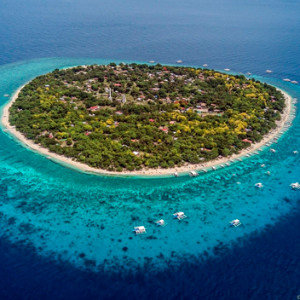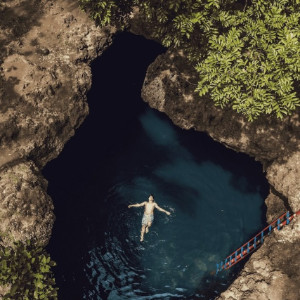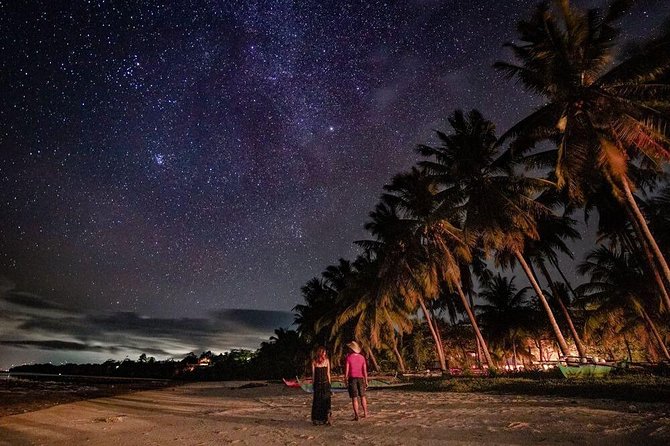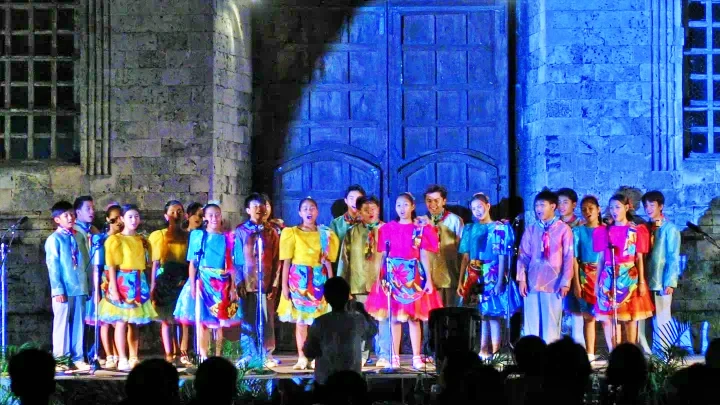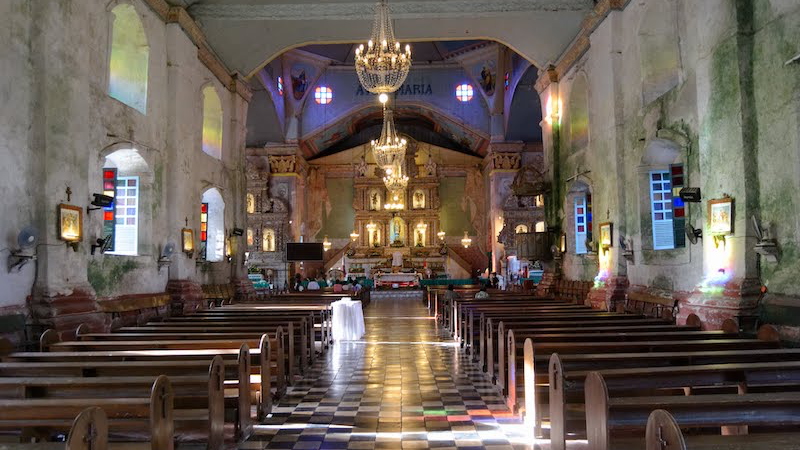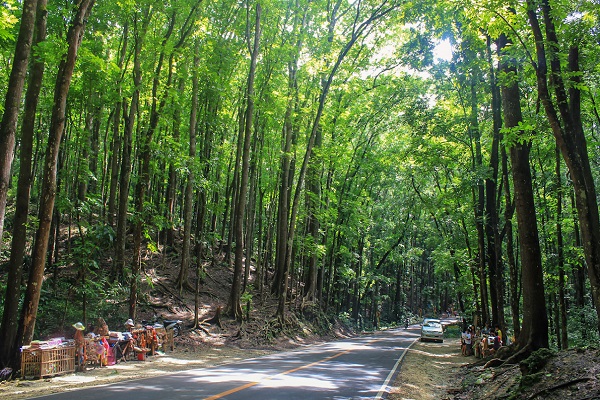Tagbilaran Cathedral of St. Joseph the Worker

Secure your Cebu Bohol ferry tickets today to start your unforgettable journey!
History of St. Joseph’s Cathedral
The parish of Tagbilaran is one of the first 6 parishes founded by the Jesuit missionaries who came to Bohol in 1595. Saint Joseph the Worker, a favorite among the Jesuits, was enthroned as the patron saint by Rev. Fr. Joaquin de San Jose in 1767, a year before the Jesuits were expelled from the country.
Recommended Bohol Philippines Tours
[ Bohol Sight Seeing Day Trips - Check Out Availability ]
[ Full Day Cruise and Sailing Tours - Check out Availability ]
[ Full Day Adventure Tours - Check out Availability ]
Discover more of Bohol's natural wonders through our recommended tours. Click on the links below to embark on unforgettable adventures:
Ready to explore the beautiful islands of Cebu and Bohol? Secure your ferry tickets today through 12go and start your unforgettable journey!

When the Jesuits left the Philippines in 1768, the parish was turned over to the Recollects. The original church, which was built by the Jesuits through forced labor of the natives, stood on the very spot where the present church stands but was razed to the ground on December 23, 1798.
The church, in the form of a cross as most old churches are, was reconstructed and enlarged through the efforts of Rev. Fr. Valero de San Sebastian from 1839 -1855. A 2-storey convent was added by Rev. Fr. Lucas Corominas in 1872. The bell tower, built from 1854-1888, was the contribution to history by Rev. Fr. Jose Sanchez.
Rev. Fr. Escolastico Enciso made improvements between the years 1888 and 1894 by adding iron cornices, wooden flooring, and chandeliers. An atrial cross, put up in front of the church in February 1828, was repaired by the Knights of Columbus, Council 31116, on February 1949. Where the atrial cross once stood, the statue of St. Joseph the Worker has been enthroned as the patron saint of the whole province of Bohol on May 1, 1996, as a part of the Cathedral Expansion Project.
Renovations in the 20th century, between1945 and 1951, were initiated by the first Bishop of the Diocese of Bohol, Msgr. Julio Rosales, assisted by the parish priest, Rev. Fr. Arturo Tecson. These improvements were appreciated by the people, but some changes were deeply regretted by the history-conscious faithful. Among these were:
- The antique wooden flooring was replaced by reinforced concrete.
- The total change of the ceiling which forever destroyed centuries-old original frescoes depicting catechetical themes and biblical scenes.
Old folks miss the beautifully portrayed lessons in faith which then indelibly etched in their memory the visuals that awakened and strengthened their Catholic faith. Gone forever from the Cathedral of Tagbilaran are the lovely ancient frescoes which can still be found in many historic churches of Bohol.
During the period of 1952-1970, under the leadership of Msgr. Manuel Mascarinas, with the assistance of parish priests Rev. Fr. Pedro Namoc and Rev. Fr. Camilo Auza, the Tagbilaran Cathedral underwent further major innovations, to wit:
- Total change of the church façade and the choir loft
- Major renovations in the interior and exterior walling.
- The main altar was moved backwards by 3 meters to widen and enlarge the presbytery.
Gone are the massive stone-walls that provided protection during the era of pirates and insurrectos, walls that witnessed the blood and tears of our ancestors who were subjected to forced labor! But… the new walls brought in more light & fresher air, and paved the way for additional wings to accommodate a fast-growing congregation. The number of parishioners in early times is a far cry from the burgeoning populace of the present.
The cathedral chancery has kept a complete record of all parish priests who have served the church and the record is placed at the Cathedral entrance for all to see. The record starts from the first recorded parish priest in 1742-1748, Rev. Fr. Joseph Ma. Carnesione up to the present parish priest, Msgr. Jeffrey P. Malanog.
Location of the Cathedral
The Cathedral of Saint Joseph the Worker, the main seat of the Catholic faith in Bohol, sprawls on a wide area facing Carlos P. Garcia Avenue, the principal street of Tagbilaran City. Located in the central part of the city, the church has a picturesque setting. In front of it is the City plaza, famed for its flocks of doves and a haven for those who yearn to be alone to meditate, or to rest and relax, or to enjoy a tete-a-tete.
Across the street from the plaza looms the massive, imposing provincial capitol, a stone-built edifice that has been the seat of Bohol’s civil government since Spanish times. At the back of the Cathedral, built on a promontory is a 3-storey rectory, a modern initiative of parish priest Msgr. Cirilo Darunday, sitting astride the old convento which has long been converted into a Palacio de Obispado. Both old and new convents stand on a cliff overlooking Tagbilaran’s scenic bay, where across a shallow sea of about a mile wide, can be seen nestled beneath the hills of the town of Dauis, the beautiful, famed church of Our Lady of the Assumption, whose church bells can be heard across the sea on quiet days.
Heritage Features
The Tagbilaran Cathedral appears imposing outside, and is wide and roomy inside. It has a Neo-Romanesque façade with corbelled arches underneath the cornice. There is a porch before the main entrance. The statue of Saint Joseph, patron saint of Bohol, stands in front where once the atrial cross stood.
Both the interior and exterior of the church of Spanish times have been greatly renovated. Despite frequent renovations to meet modern-day requirements, some historic pieces still remain. The side altars are of the 18th century baroque style. The main or center altar, simply but elegantly decorated with ornate gold designs depicting symbols of Old Testament times, is in the 19th century Neoclassical style.
The image of Saint Joseph the Worker that occupies the center of the main altar is apparently of 18th century vintage .The image of San Roque (St. Roch), the secondary patron placed on the left, is dated 1848, while that of St. Vincent Ferrer on the left is marked 1861. On the main altar’s second storey, immediately above St. Joseph’s throne, is the image of Nuestra Senora de Lourdes ( Our Lady of Lourdes) said to be donated in 1895 by Dona Maria de Bourbon of the Royal House of Spain. This image was installed with great pomp in Tagbilaran in February 19, 1895.
We may recall that the Blessed Virgin Mary appeared in Lourdes, France to the child Bernadette in 1858. The apparition received Episcopal approval in 1862. Pope Leo XIII authorized a mass formulary to the devotion in 1891. Four years later, in 1895, the devotion had spread to and in Bohol.
The images of the Sacred Heart of Jesus and the Immaculate Heart of Mary, on the left wing retablo, were acquired in 1897. Of similar vintage are those of St. Therese of the Child Jesus, Our Lady of Mount Carmel, and Our Lady of the Holy Rosary and Our Lady of the Pillar. From these collections of venerated images, one can sense the Jesuits’ love for Jesus and those close to Him, such as His Mother, St. Joseph and the Blessed Trinity.
Confessionals, no longer extant in many churches, are still found and used in this place of worship. Here, they reflect old age and constant use.
Modern Touches
To answer the needs of a fast growing populace, the Cathedral Expansion Project was embarked upon in the early 20th century. A total change of the ceiling, now in plain cream, removed forever the ancient, beautiful frescoes so expressive of our faith. The enlarged presbytery now has an ornately designed stone altar beneath St. Joseph’s throne. A canopied place of honor for the Bishop is in place on the left side.
The two-tiered side altars are filled with Jesuit-favorite saints which now are the natives’ favorites, too. On the left wing are the Sacred Heart of Jesus, 4 different devotions to the Blessed Virgin, the Mother of Jesus, and St. Therese, the Little Flower. On the right side altar are the Risen Christ, the Immaculate Heart of Mary, St. Anthony of Padua, and Our Lady of Perpetual Help.
Click for FREE information and compare prices of Bohol Island hotels and beach resorts
The two added wings, done during the tenure of Msgr. Cirilo Darunday as parish priest, have admirably expanded the Cathedral. These are spacious and airy. Where old churches have massive walls and doors, the wings’ intricately designed steel bars serve as walls and doors, allowing light and fresh air to come in. Above the airy doors are lovely stained glass artworks depicting the mysteries of the Holy Rosary of the Blessed Virgin Mary.
Two former Bishops of the Bohol Diocese, Msgr. Manuel Mascarinas and Msgr. Felix Zafra, who died during their term of office, have their final resting place beneath the right wing retablo.
Outstanding Devotions
The Boholanos are famed for their religious fervor. One of the highest percentages of church attendance is recorded in Bohol. The churches are always full. On ordinary days, the Cathedral celebrates Holy Mass hourly, from 4 a.m. to 7 a.m. There is a Mass at noon and another in the evening. On Sundays and holidays of obligation, there are more. When traveling to Tagbilaran, a daily communicant will hardly miss his cherished commitment with so many celebrations of the Mass to fit in.
The adoration of the Blessed Sacrament is paramount in the hearts of many of the faithful. A Perpetual Eucharistic Adoration (PEA) chapel has been added to the left side of the front of the Cathedral edifice. This is open 24 hours a day. The number of visitors that flock there each hour bespeak of the great devotion the faithful have in the Real Presence of Jesus in the Tabernacle.
Adjacent to the PEA Chapel is the Chapel of the Saints, where most church-goers flock before or after Mass. There, in silence, they venerate their favorite saints, pleading or thanking for blessings desired. Most pauses momentarily at the huge Crucified Christ or Our Mother of Sorrows; some go directly to Jesus of the Divine Mercy, to St. Jude or St.Anthony of Padua or to any of the saints of their choice.
Upon entrance to the Cathedral, one finds a niche for St. Joseph the Worker on the left side. Here San Jose devotees pause to present their petitions or offer thanksgiving. The image at the main altar is too far and too high to reach out; here, the Saint is accessible to all, as he holds the Child Jesus in his arms and looks down lovingly upon God’s children. The fiesta celebration of this primary patron saint falls on May 1st and is observed by the whole city.
On the right side near the entrance, opposite that of St. Joseph’s, is a niche for the Blessed Virgin Mary in her title as Birhen sa Barangay, the local title of Our Lady in the Philippines. Here Marian devotees flock to touch and to talk to their Mother Who is the outlet of all graces from Heaven. The Blessed Mother, in her different titles, is honored in the different sections of the city. Foremost is Our Lady of Lourdes. So many of the young, and even the elderly, wear her habit. For secondary patron saints, different sectors celebrate fiestas on different dates. For instance, there’s a seeming competition in honoring Our Lady as Delro and Delpi, the faithful’s moniker for Nuestra Senora del Rosario and Nuestra Senora del Pilar.
The secondary patron saints, St. Roch and St. Vincent Ferrer occupy the main altar for the faithful’s recognition of the role they played in saving the people of Tagbilaran during the plagues and cholera epidemic of the 19th century.
Top of The Cathedral of St. Joseph the Worker
Ready to explore the beautiful islands of Cebu and Bohol? Secure your ferry tickets today through 12go and start your unforgettable journey!
recommended hotel booking
Book your stay in Bohol's breathtaking surroundings through Agoda and experience the ultimate relaxation
Top 25 Sights and Attractions in Bohol
- Chocolate Hills
- Tarsier Conservation Sanctuary
- Panglao Island
- Loboc River Cruise
- Hinagdanan Cave
- Balicasag Island
- Alona Beach
- Bilar Man-made Forest
- Blood Compact Shrine
- Baclayon Church
- Bohol Bee Farm
- Anda Beach
- Sipatan Twin Hanging Bridge Loboc
- Danao Adventure Park
- Sagbayan Peak
- Butterfly Conservation Center
- Clarin Ancestral House
- Dimiao Twin Falls
- Mag-Aso Falls
- Anda White Beach
- Lamanok Island
- Rajah Sikatuna Protected Landscape
- Dauis Church
- Can-umantad Falls
- Punta Cruz Watchtower
Top 20 Destinations of Bohol
- Tagbilaran City
- Panglao Town
- Talibon Town
- Anda Town
- Loboc Town
- Dauis Town
- Ubay Town
- Tubigon Town
- Loon Town
- Jagna Town
- Alicia Town
- Carmen Town
- Getafe
- Danao Town
- Bilar
- Alburquerque
- Sierra Bullones
- Sagbayan Town
- Baclayon Town
- Antequera
Ready to explore the beautiful islands of Cebu and Bohol? Secure your ferry tickets today through 12go and start your unforgettable journey!
All Rights Reserved ©2023. Bohol Philippines Travel Guide
Address: Talibon, Bohol, Philippines




